Polka Dot Plant (Hypoestes Phyllostachya Baker) Care & Propagation Guide
Written by Iris
Jan 31 2023
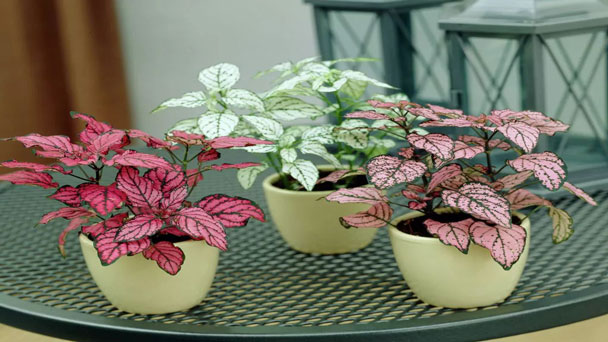
The polka dot plant (Hypoestes Phyllostachys Baker) is a delicate common house plant with colorful brightly variegated leaves that stand out against most other foliage plants. The leaf surface is olive green with red, pink, or white spots on it. They are highly hybridized to produce a variety of colors and types of leaf spotting. The most common type is the pink polka dot plant. The plant height of the Polka Dot Plant can reach about 30~60 cm, but the potted plants are usually controlled within 10-15 cm. It can bloom in spring, the polka dot flowers are small and inconspicuous, and they are lavender small spike-like flowers.
How to Grow Polka Dot Plant? In fact, Polka Dot Plant is a tropical foliage plant that is easy to grow, as long as we find the right way and care tips. The following will introduce Polka Dot Plant care and propagation tips in detail.
Polka Dot Plant Care Quick Info
| Botanical/Scientific Name | Hypoestes Phyllostachya |
| Common Name | Polka Dot Plant |
| Uses | Bordering beds or for mixed plantings |
| Origin | Madagascar |
| Light Care | Bright, indirect light is ideal indoors |
| Soil Care | Rich soil with good drainage |
| Temperature Care | 70° to 75°F |
| Humidity Care | Warm location and boost the humidity |
| Watering | Keep the soil consistently moist |
| Pruning Care | Pruning the plant during the growing season |
| Fertilizer Care | A liquid, all-purpose fertilizer product |
| Propagation | Take tip cuttings |
| Toxic | Not poisonous |
| Flower Color | Purple flowers (Read More: Polka Dot Plant Flowering) |
Polka Dot Plant Propagation
Polka Dot Plant Propagation with Seeds
When you are propagating polka dot plants (Hypoestes Phyllostachys) by seed, if you don't already have them on hand, allow the seedheads to dry on the plant and then remove them. Once you have collected the seeds and stored them until planting time, sow them in a tray or pot filled with damp peat moss and perlite or a well-draining potting mix. This should be done prior to the last expected frost in spring or sometime in summer. The polka dot plant seeds require warm temperatures to germinate (around 70-75 F. or 21-24 C.) and will do so within about two weeks given adequate conditions. It usually helps to add a clear plastic covering over the tray or pot to hold in both heat and moisture. This should be placed in indirect sunlight. Once established and strong enough, they can be repotted or planted outdoors in a partially shaded area with well-draining soil.Polka Dot Plant Propagation with Stem Cuttings
This is the main method of propagating Polka Dot Plants (Hypoestes Phyllostachys) as it's suitable for all maturities. It's also really easy to get right as you can create several new Polka Dot Plants just by taking a few small cuttings- Locate some healthy Polka Dot stems
When taking cuttings to propagate your Polka Dot Plant, you need to check for one important thing; a node. Without it, you will have a very slim chance of successful propagation. A node is where a leaf has grown from the stem.
- Make the Cuttings
Keeping your tools clean avoids passing on bacteria or pests to your plant and also is important when dealing with toxic plants. (Although Polka Dot Plants are largely non-toxic, it's a good habit to get yourself into)
- Fill up a transparent container with water
Fill up your container with temperate water (so as not to shock your delicate cuttings) and place your cuttings in so that the lowest third is covered by the water. Covering any more of the cutting increases the chance it will rot. If any leaves will be in contact with the water then remove them at this step as they will start to rot after being submerged for a few days.
We always prefer to use a clear container when propagating as you can see everything a little clearer.
- Place your cuttings in bright but indirect light
- Change out the water regularly
- Be patient
The benefit of Polka Dot Plants growing roots so quickly is that there is less time for something to go wrong and the risk of root rot is significantly reduced.
- Plant your Polka Dot cuttings into a fresh potting mix
We recommend using a high-quality potting mix to make sure your cuttings are getting the right mix of nutrients. Carefully place your cuttings a few centimeters into the soil. You can also pop the cuttings back into the mother plant so it becomes a little fuller – it's up to you!
- Resume usual Polka Dot Plant care
Polka Dot Plant Propagation with Division
This method of propagation only really works if your hypoestes Phyllostachys is quite bushy, otherwise, they can be left looking a little straggly. If you do have a big enough Polka Dot Plant that you don't mind dividing then this method is great for those who don't want to wait for new roots and leaves to grow – instead, you get new plants instantly! (Read More: How Long Do Polka Dot Plants Live)- Take your Polka Dot Plant out of its pot
The first step is to carefully lift your plant out of its pot. Don't tug too hard at the leaves as they are quite delicate but slowly shimmy the plant out of the pot.
- Separate out the plant
How many new plants you want to create is completely up to you and totally depends on your mother plant.
- Place each new plant in a fresh potting mix
- Continue normal Polka Dot Plant care
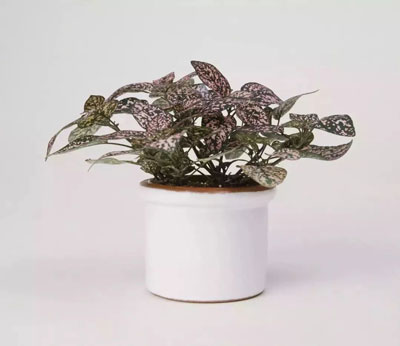
Polka Dot Plant Care
Polka Dot Plant Light Requirements
To keep the colors of Polka Dot plant leaves bright and vibrant good light conditions are a must.Bright, indirect light will work best for Polka dot plant. Indoors, a spot near a window with morning sun will give your plant a good amount of healthy sunlight. Whichever direction your windows are facing, too much light may hurt your plant. If the sun is too strong you can diffuse the light. Provide a sheer curtain for your plant to soften the light it receives.
Artificial light from grow lights can also work if you do not have a bright place you can put your plant in. When given enough light, Polka dot plants can produce flowers. It will be up to you if you will cut the flowers or keep them. Keep in mind that flowers can cause the plant to be leggy as it expends too much energy on allowing them to bloom.
Another reason for the plant being too leggy is lack of light. The leaves of the plant tend to reach out for places with better lighting.
Read Next:
How to Fix a Leggy Polka Dot Plant
How Much Light Does a Polka Dot Plant Require
Polka Dot Plant Soil Care
Polka dot plants tend to do best in nutrient-rich, well-draining soil. It doesn’t have to be complicated and you can easily mix your own! For example, you can use general potting soil mixed with perlite for drainage and throw in a layer of compost for extra nutrients.Polka Dot Plant Watering
The polka dot plant requires moist soil but is not soggy. If it dries out too much, it will begin to wilt and keel over. A quick watering will usually help it to spring right back. Avoid allowing your polka dot plant to sit in water as it will cause root rot. Water well when the top ½ to 1 inch of soil has dried out. Also, remember that smaller-sized planters will dry out more quickly than larger-sized planters. Make sure that you’re watering the plant from the soil level and not from the top as the water on the foliage may cause water spots and damage to the tender leaves and flowers. Learn More: How Much & How Often to Water Polka Dot PlantPolka Dot Plant Temperature & Humidity Care
The air humidity of your home is what determines if your Polka dot plant care will be easy or not. Polka dot plants prefer to be in a humid environment. A minimum level of 50% humidity will keep the plant happy, but more is better. They will tolerate lower humidity if they are happy with other things in their plant life.If you see your Polka dot plant struggling – drooping leaves often, leaves drying, brown tips, we recommend placing it in a terrarium. They make excellent terrarium plants, and they will thrive in an enclosure.
Hypoestes Phyllostachys are plants that are native to temperate countries. This means that they thrive better under warm temperatures. Ideally, your plants will grow well and show vibrant colors in 70°F to 80°F (20 to 27°C.). Lower room temperatures are OK too. They won’t tolerate too much cold air, especially frost. When grown indoors, keep away from cold drafts.
Polka Dot Plant Fertilizer Care
If you want your polka dot plants to look their best, they benefit from being fed once a month during the growing season. After all, these guys are pretty quick growers.A diluted liquid houseplant fertilizer is typically enough to do the job. As mentioned above, you can also use a bit of compost for the extra nutrients.
If you notice the very tips of the leaves becoming brown and crispy, you may be using too much fertilizer. Luckily, you can just flush the soil with some distilled water, snip off the affected leaf and carry on from there. No panic, just adjust your care as you go along.
Polka Dot Plant Pruning Care
Polka dot plants (Hypoestes Phyllostachys) grow quickly and tend to get leggy without regular pruning. To encourage fuller growth and maintain the desired shape and size, pinch back the stem tips periodically throughout the growing season. Also pinch off any flower spikes that may develop. They offer little ornamental value and will detract from the foliage.Polka Dot Plant Pests & Diseases Care
Watch out for scale, whiteflies, mealy bugs, and aphids on your polka dot plants. You might notice foliage that's discolored, has holes, or otherwise appears unhealthy, along with small bugs moving on the plants. Plants were grown indoors under suboptimal conditions typically have more problems with pests and diseases than those grown outside in the correct environment. Read More: Are Polka Dot Plants Toxic to Cats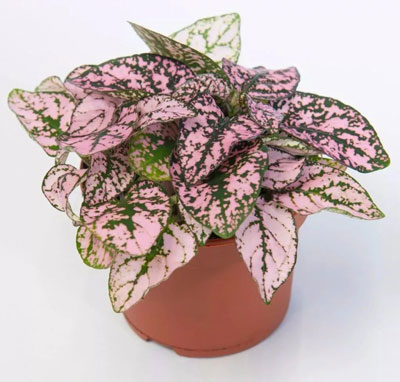
How to Prune Polka Dot Plant?
Don't worry if your Polka Dot plant has become lanky. It is not likely that your plant is in immediate danger, and the solution is not too difficult.
Identifying the root of your plant's legginess is the first step. In order to ensure that your plant grows less leggy in the future, you can then make the necessary adjustments to how you are caring for it.
Pruning the Leggy Polka Dot Plant
Pruning your Polka Dot plant is the best way to immediately improve its appearance if it is leggier than you would like.
Additionally, pruning will promote a bushier growth pattern for your plant, encouraging it to spread out from the ground rather than grow upward. Additionally, routine pruning will stop your Polka Dot plant from flowering and dying back.
In case your plant really needs it, you can prune your Polka Dot plant at any time of the year.
It's best to avoid pruning your plant too severely or frequently during the fall and winter because it won't recover as quickly.
Your plant will grow much more quickly in the spring and summer, and will benefit from light pruning once every few months. Polka Dot plants are simple to prune.
While using your fingers is often suggested because it is convenient, doing so results in a ragged cut that greatly increases the likelihood that your plant will become infected. Therefore, you will need a pair of clean, sharp scissors.
How to Prune Your Polka Dot Plant?
- Look at your plant first, then choose which components you want to remove.
- Holding the new growth firmly but gently, pull to create room for your scissors.
- Cut the stem of your plant just above a group of leaves with your scissors.
- Try to cut cleanly with a single snip; don't "saw" at the stems of your plant.
- Never take out more than one-third of a plant's growth at once.
- Only prune your plant in winter if it has grown very leggy; otherwise, do the majority of your pruning in spring and summer.
Varieties of Polka Dot Plant (Hypoestes Phyllostachys)
Within the main species, Hypoestes Phyllostachys, there are many varieties; all are bred for their leaf coloration. They include:'Camina': Dark green and red-spotted leaves
'Confetti': Leaves in green and spots of white, pink, rose, red, or burgundy
'Pink Brocade': Green leaves with mottled pink spots
'Splash' series: Leaves in mixes of greens with splotches of pinks, reds, or whites
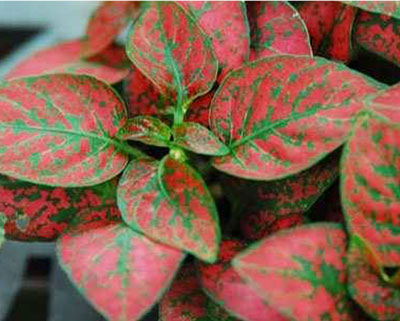
Polka Dot Plant (Hypoestes Phyllostachys) FAQ
Can I Place My Polka Dot Plant Outdoors In Warmer Weather?
Just as many other houseplants, the polka dot plant does very well outside in a shady location during the warmer months. Bring it indoors if the temperatures are going to drop below 60 °F. Also, avoid allowing it to become too hot and keep it in temperatures below 75 °F.Does The Polka Dot Plant Ever Grow Outdoors Exclusively?
In-home regions of South Africa, East Asia, and Madagascar, the plant is frequently grown outdoors. When grown outdoors it may become as tall as three feet. It does, however, adapt itself well to indoor living and will provide a delightful addition to any collection of houseplants. Make sure to keep it out of too much sunlight and don't overwater your polka dot plant.Does The Polka Dot Plant Require Any Special Care?
While the polka dot plant doesn't require a lot of specialized care, it will tend to become leggy if it's grown in the proper low lighting. This is due to the plant reaching out for more light however, the light will cause the plant to fade and your “polka dots” will become lighter in color if the plant is in too much light.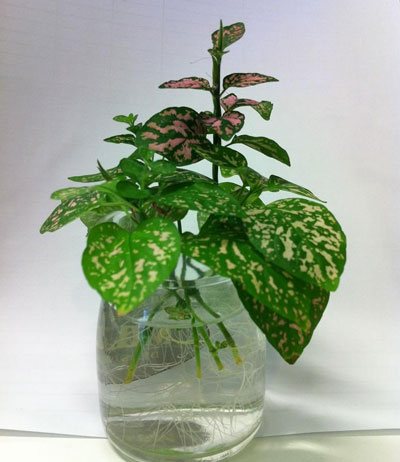
How Often Should I Water My Polka Dot Plant?
When a plant needs water, it is better to let the plant tell you. Polka dot plants don't like to dry out completely, so only water yours when the top half-inch of the pot's soil is completely dry.
Do Polka Dot Plants Need Sun Or Shade?
Hypoestes grows best in bright, filtered light, but tolerates some sun. Partial shade is preferable to full sun for the plants' color, but very low light also causes the leaves to lose their color.
How Much Sun Do Polka Dot Plants Need?
Grow polka dot plant in a bright or medium-light spot. It doesn't mind a little direct sun on its foliage and can tolerate bright areas indoors. Although the polka-dot plant can tolerate low light conditions, we don't advise growing it there for an extended period of time because it can become tall and lanky.
Are Polka Dot Plants High Maintenance?
Polka dot plants are easy to maintain and propagate. Even though it can occasionally be challenging to establish the ideal growing conditions, once done, it usually works out fine.
Latest Updated
- How to Water Polka Dot Plant (Frequency, Amount, Ways & Solution)
- How to Fix a Leggy Polka Dot Plant (Reasons & Solutions)
- Do Polka Dot Plant Flowers Bloom
- How to Propagate Polka Dot Plant (Ways & Steps)
- Polka Dot Plant (Hypoestes Phyllostachya Baker) Care & Propagation Guide
- Philodendron Golden Goddess vs Lemon Lime - Are They The Same
- Philodendron Lemon Lime vs Moonlight - Differences
- Lemon Lime Philodendron Care & Propagation Guide
- Why Does My Ponytail Palm Have Brown Tips - How to Fix
- Is Ponytail Palm Toxic To Cats - Explained & Facts
Popular Articles
- Winter maintenance of Antirrhinum Majus
- How to Grow Terminalia Mantaly Tree
- How to Grow and Care for Crossostephium Chinense
- How to grow Antirrhinum Majus in spring
- Peristeria Elata (Dove Orchid) Profile: Info & Care Guide
- Underwatered Snake Plant (Sansevieria Trifasciata) - Signs And How To Fix
- How to Care for Brazilian Jasmine Plant (Mandevilla Sanderi)
- Rosa Chinensis (China Rose): Plant Growing & Care Tips
- How to Grow & Care for Graptopetalum Purple Delight in Summer
- How to Care for Baby Sun Rose (Aptenia Cordifolia)